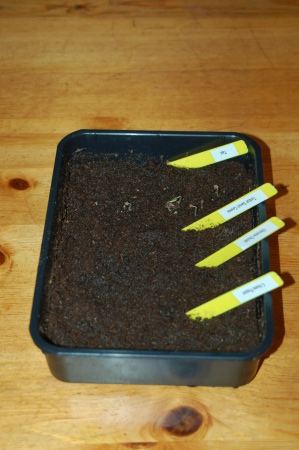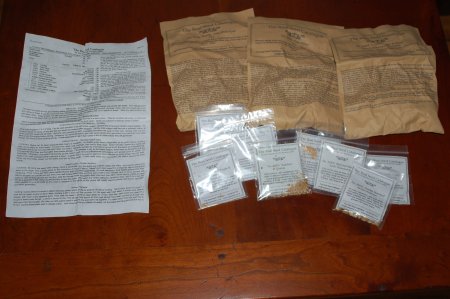It just arrived today! This is old news to most of you because Meg at Future House posted about their copy which arrived a few days ago. I posted last year about the 2007 yearbook, as well as making a post about the yearbook in 2006.
It’s my third year getting the yearbook, and when it arrives my head is always full of thoughts about what I might order as well as the SSE themselves and what kind of organization they are. Really a lot has changed in the world in the last few years, and the SSE has changed a lot too.
Together with sending the yearbook, the SSE sent me an email notifying me it was on it’s way. It’s worth mentioning something else that was in this email. The Svalbard Global Seed Vault in Norway opened it’s doors for the first deposits a few days ago, and the SSE sent it’s first deposit of 485 vegetable varieties. The SSE plans to send about 2000 more varieties per year over the next few years, making it one of the worlds largest depositors.
You may remember in my previous posts on the SSE yearbook I mentioned the declining numbers of ‘listed members’. Listed members are those that offer seeds or other plant material to other members. In 2006 there were 756 (down from 801 in 2005), in 2007 there were 726 and in 2008 there are 716. Their peak was in 1995 when they had 1031 listed members. Obviously this is very important, because these listed members are the core of how and why the SSE was established, and are by many measures the most important reason it is so special and why people join.
In the past I’ve made several posts attributing the reason for the decline in listed members to older members being no longer able to participate and not enough younger members stepping forward to take their place. It’s clear not everything is quite so simple anymore.
What is clear is the number of younger people starting to save their own seeds is soaring, and membership in seed saving organizations all over the world has been increasing. Even the SSE has seen this increase, now having over 8000 members in total.
Biodiversity treaties enacted in the early 1990s, clearing the way for the Svalbard Global Seed Vault required participants to either be a botanical garden/educational institution or a private seed company.
In the case of seed collections from botanical gardens and education institutions, these would be funded by corporate interests and exist for their purposes. This would mean for example if Monsanto needed to develop a new GM soybean, they could use a variety from one of these collections, genetically modify it, then patent it. These collections are now closed to the public.
Collections belonging to private seed companies would remain property of those companies.
It appears recent changes in the last decade at the SSE were made at least in part to accommodate these new treaties, and in order for the SSE to become a private seed company with it’s own collection that it could protect and make sure their members and members of the public continued to have access to it. This is the good news, and there is every indication that they are succeeding in their goals in this respect.
At the same time, in the midst of their commercial successes, they seem to be losing touch with their members.
Towards the end of 2007 the SSE board of directors fired the CEO of the SSE, co-founder Kent Whealy. He is the former husband of the now acting CEO Diane Ott Whealy. A series of letters from different people stating their positions on the matter went out to SSE members or were published on the Internet.
I don’t have an opinion, or indeed enough information to offer much of an opinion, other than to say I am a little disappointed a better way could not have been found and a way that allowed Kent Whealy to stay at the SSE.
This entire event seems to be an indication of larger splits within the SSE, and could be connected with the declining numbers of listed members.
I plan to continue as a listed SSE member and I urge others to do the same. I also urge everyone including non-members to continue to purchase seeds and other plant materials from the SSE website and catalog.
At the same time, I think we should realize that the day may come where the SSE can no longer function as a seed exchange organization, and we should look towards making sure good alternatives exist, like other local or national seed exchange organizations. I would encourage everyone to support these alternatives as well.



